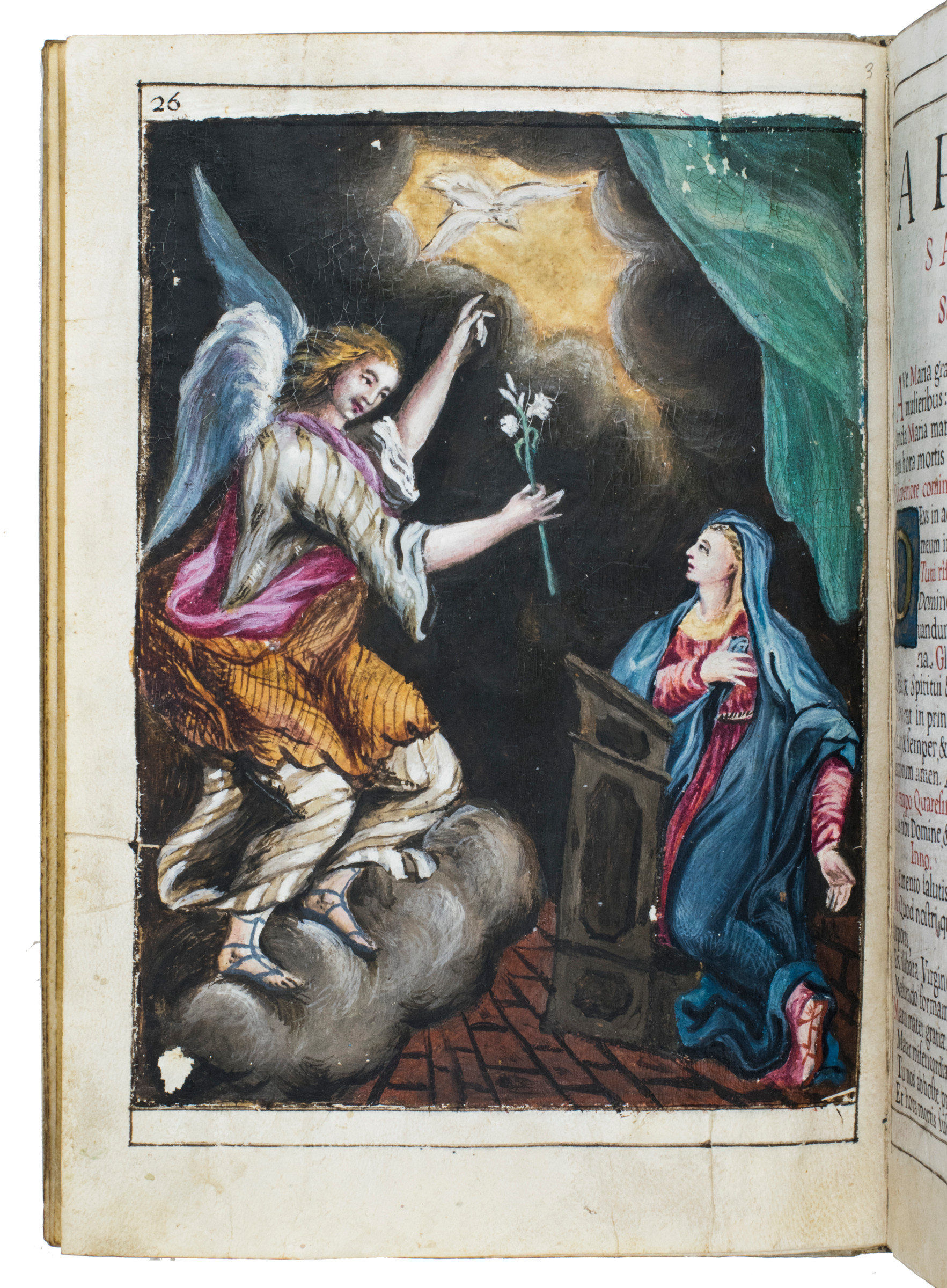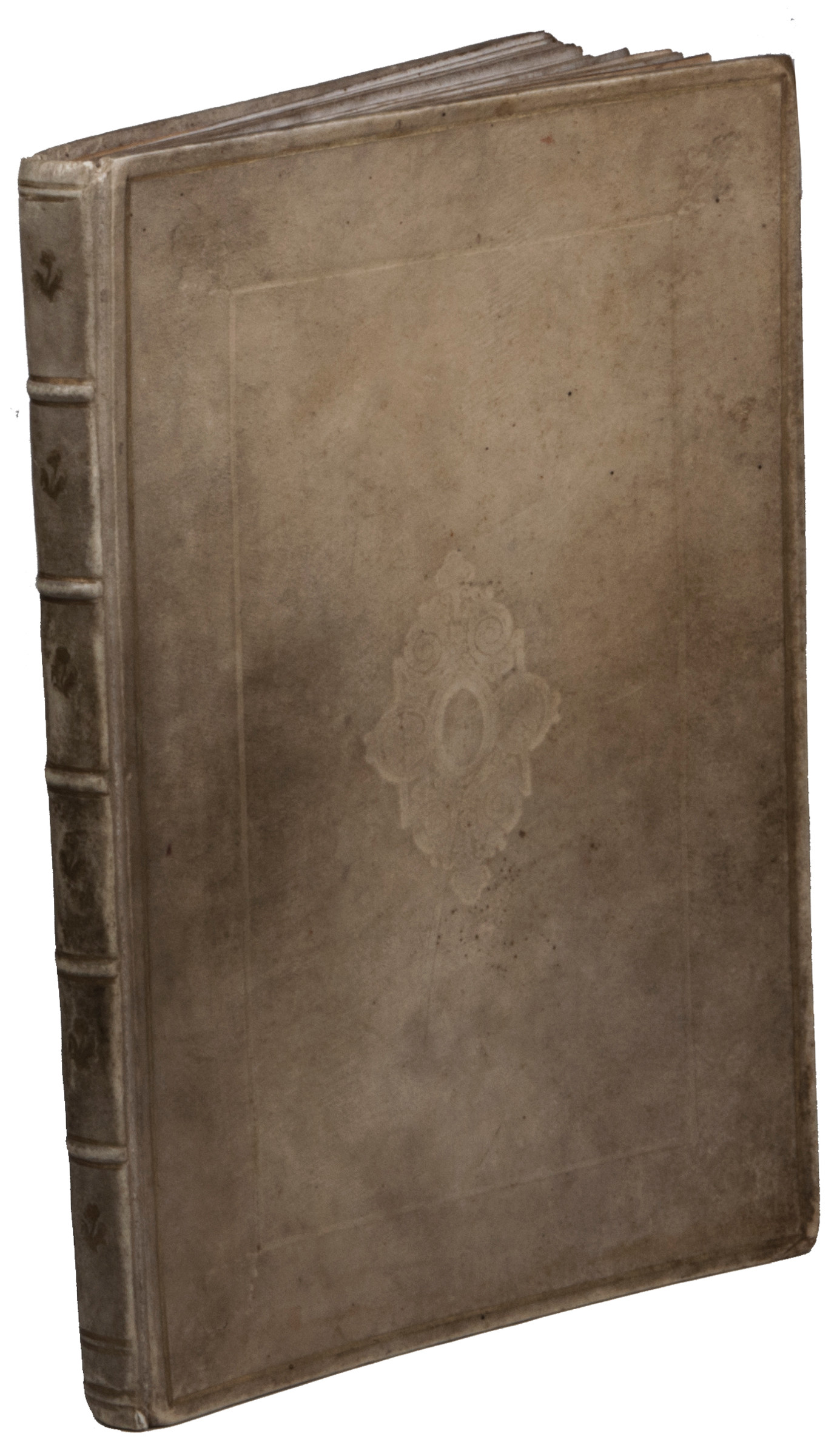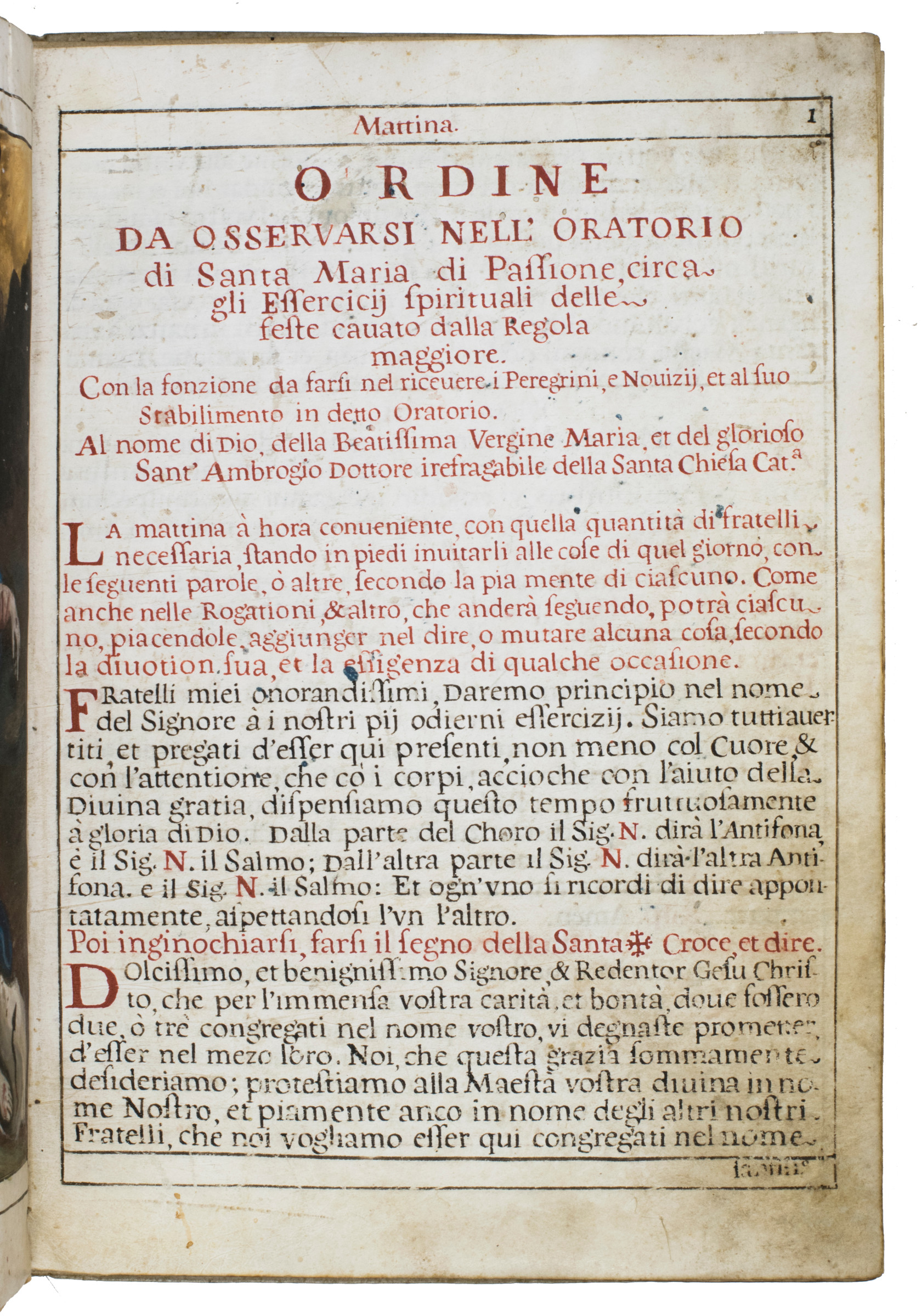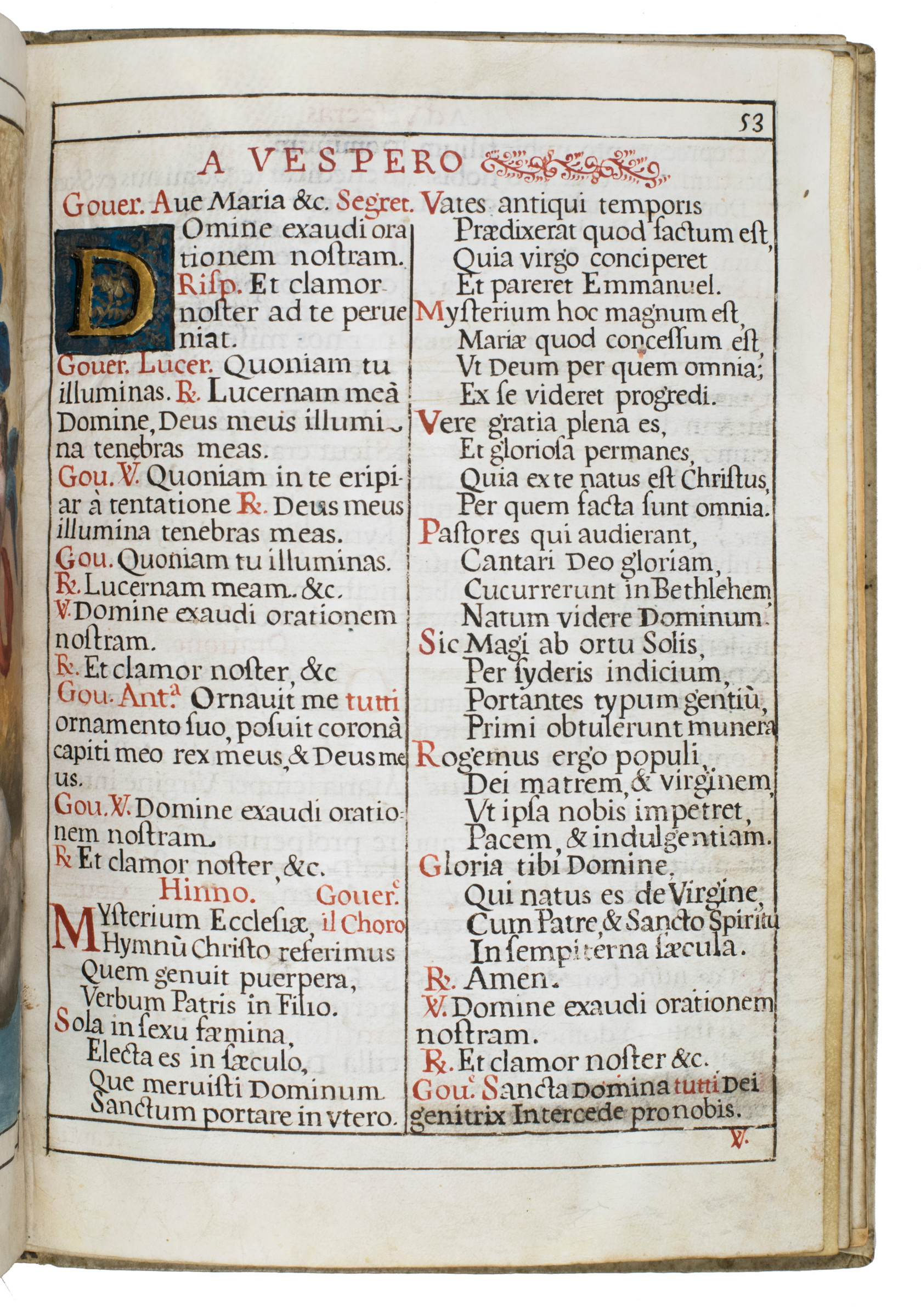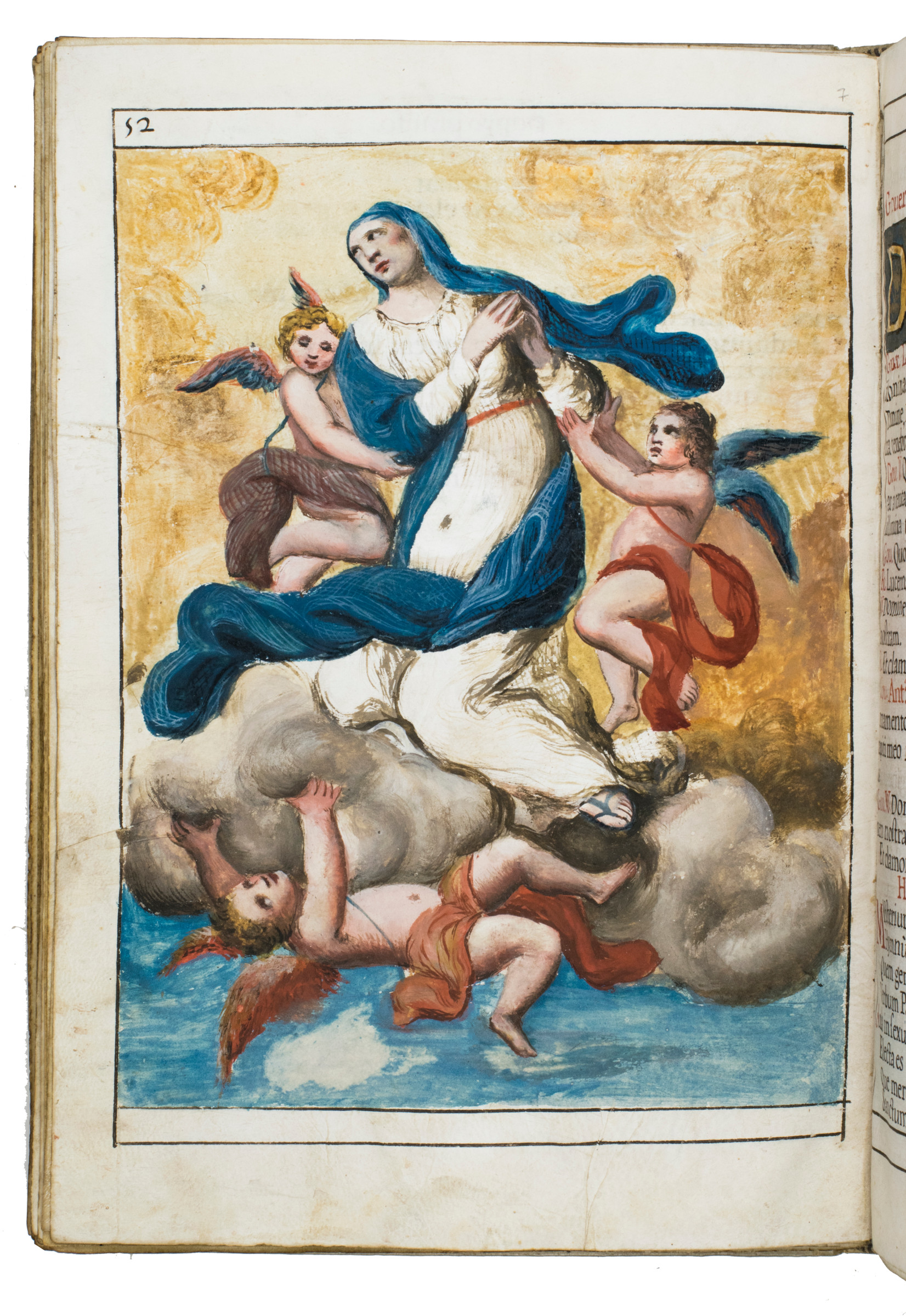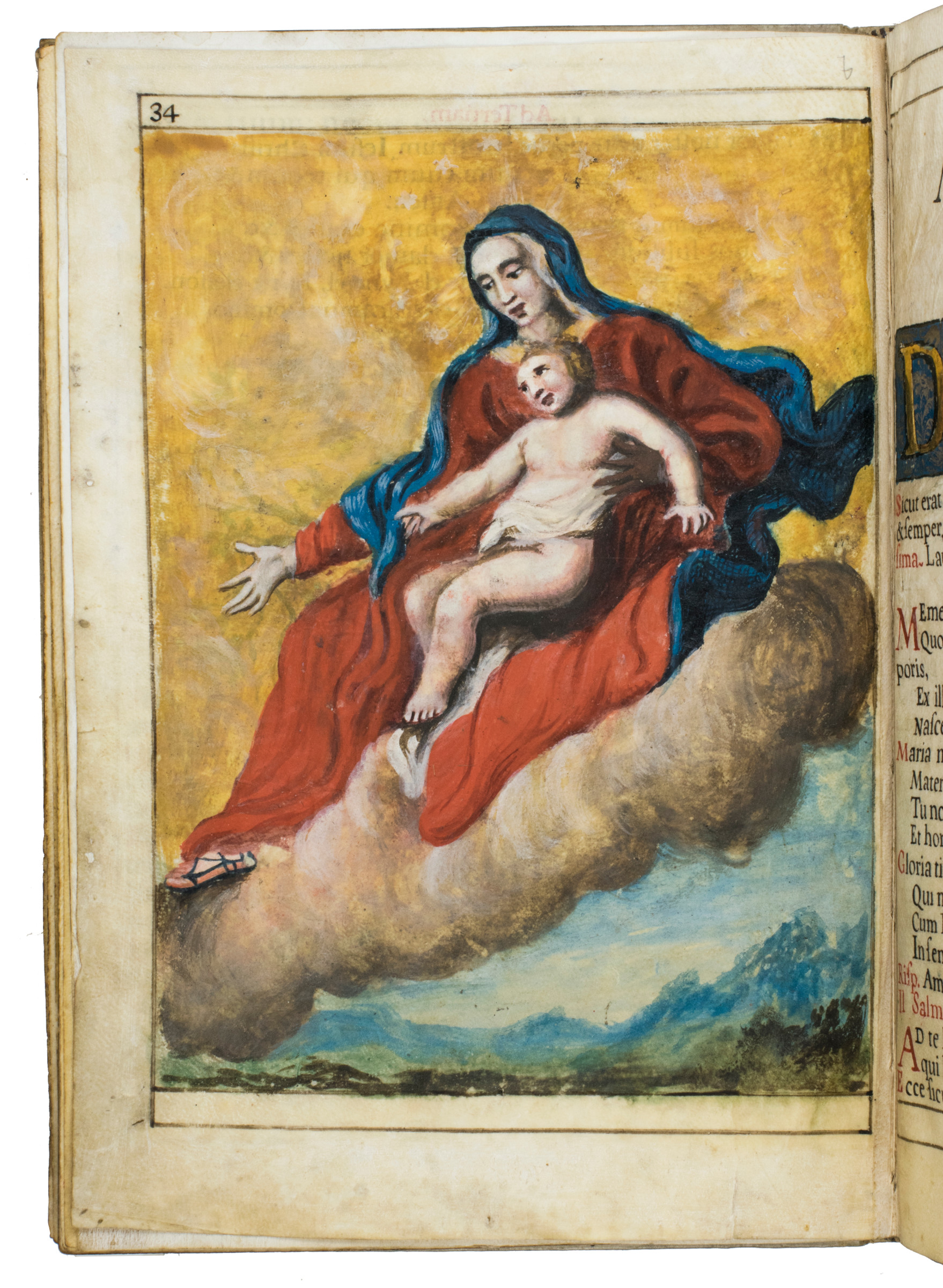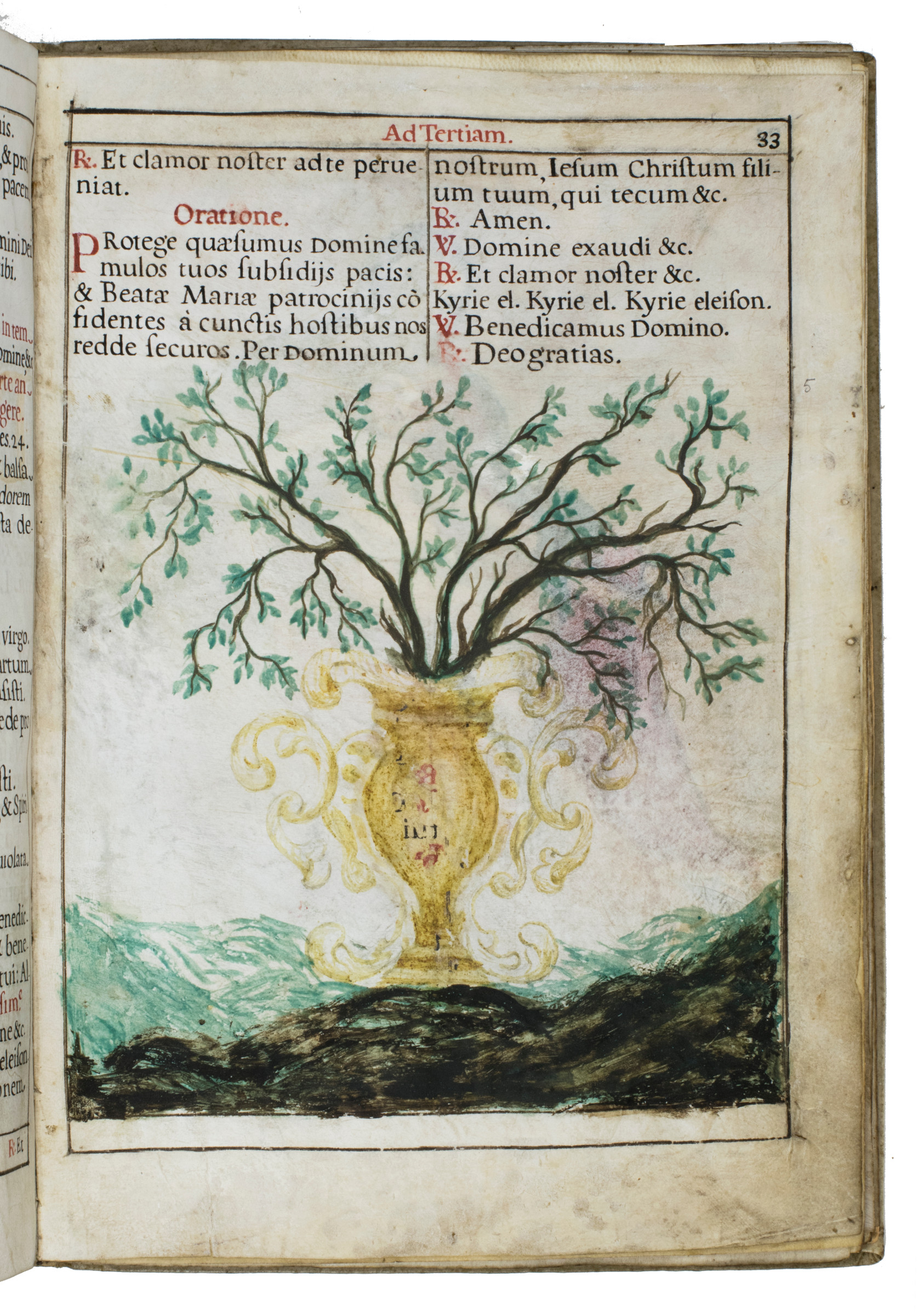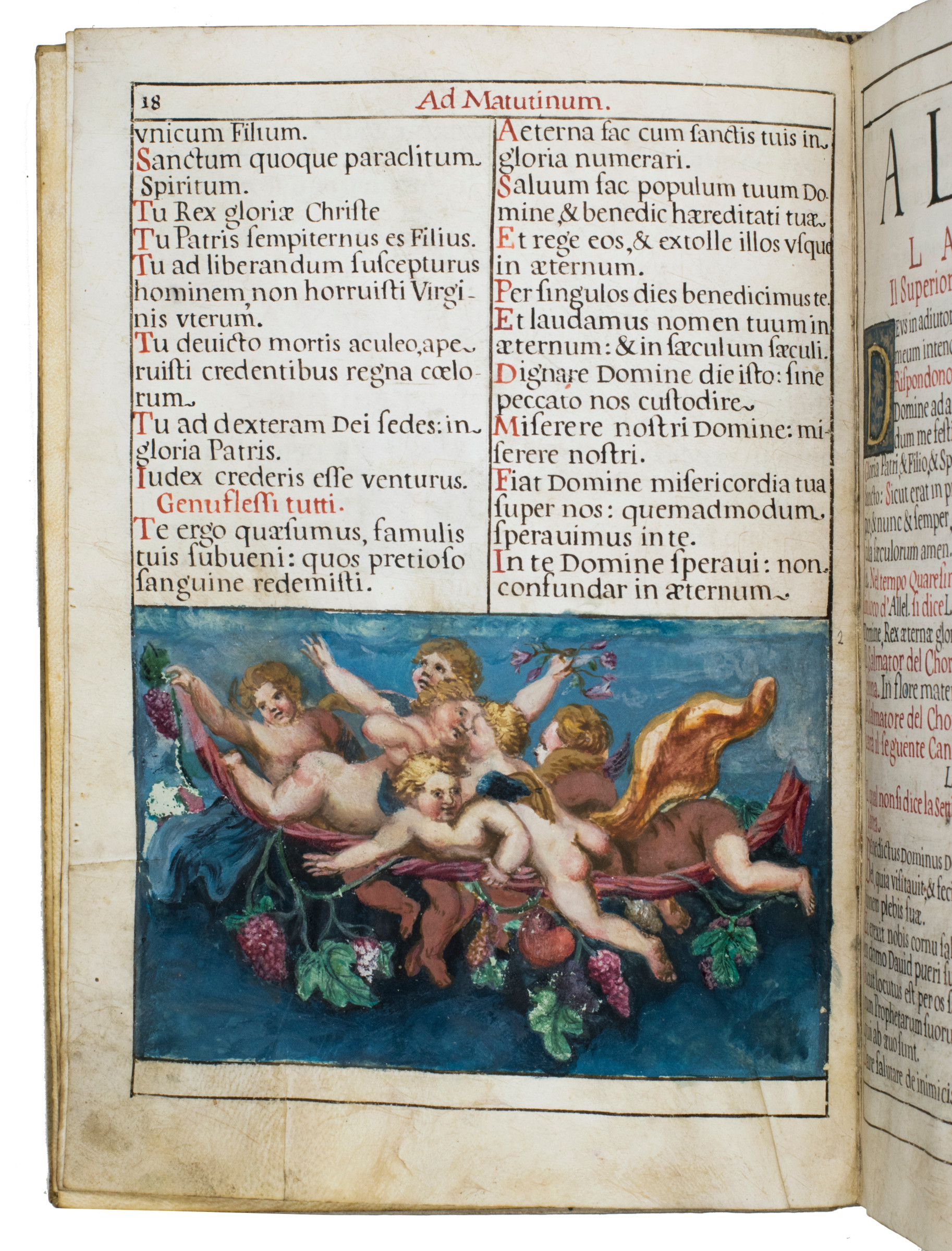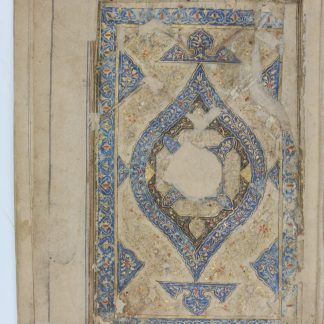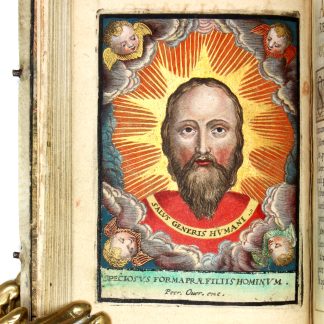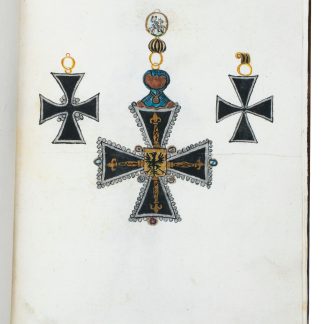A remarkable manuscript service book for the divine offices on vellum, with seven eye-catching illustrations
Ordine da osservarsi nell'oratorio di Santa Maria di Passione, circa gli Essercicii Spirituali delle feste cavato dalla Regola maggiore.
Folio (27,5 x 18,5 cm). (1 blank), (1), 66 pp. With 5 full-page and 2 half-page hand-painted religious illustrations and 9 hand-painted initials on a blue background, heightened with gold and silver. 18th c. gold- and blind-tooled vellum, each board with a blind ornamental centrepiece in a blind-tooled frame, within a larger frame of gold fillets, with a gilt floral design in each of the 6 spine compartments.
€ 14.000,00
A manuscript service book for the divine offices of the confraternity of Santa Maria di Passione (Santa Maria della Passione), remarkably illustrated and penned on vellum in a very fine and legible hand, largely imitating roman printing types. It contains seven illustrations, the five full-page examples showing the Virgin Mary: the Pietà, the Annunciation, Mary as the Woman of the Apocalypse, a Madonna and child, and the Assumption of Mary. The two approximately half-page tailpieces serve a more decorative function, representing of six putti on a garland with grape vines and a tree or shrub (laurel?) growing out of a gold vase (the fragments of red and black text on the vase are in mirror image and must have stuck to the paint). All illustrations are hand-painted with gouaches in striking colours.
A divine office, or liturgy of the hours, contains the official set of prayers for the eight canonical hours of the day: matins, lauds, prime, terce, sext, nones, vespers and compline. The day began with the matins at approximately 2 a.m. and ended at 7 p.m. with compline. Each of the offices in this manuscript begins with a hand-painted initial in gold on blue ground with silver foliage; the text of the matins contains an extra initial, bringing the total to nine. Apart from a detailed description and instruction for the offices, the manuscript also contains other instructions and rules to be observed by members of the confraternity, such as the rites for welcoming novices and pilgrims.
The first known mention of the confraternity of Santa Maria di Passione was in 1455; a set of rules ("Ordini riformati della compagniadi santa maria della passione al campanile dei reverendi canonici") has survived from 1565. The confraternity was located in Milan, in a building right next to - or even attached to - the basilica of Sant'Ambrogio called the Oratorio di Santa Maria di Passione. The basilica was built by St Ambrose in the 4th century, and during its long history it has hosted multiple religious communities, some simultaneously. Even after the damage done during the bombing of Milan by Allied forces in 1943, the building still shows this history in the many different chapels and the existence of two towers, one built for the canons located on the north side and one built for the monks on the south side of the basilica. The confraternity was disbanded near the end of the 18th century and the oratory, until then an autonomous building, was bought by the management of the basilica. The oratory was decorated with several frescos, which were auctioned off at the end of the 19th century, including three bought by the South Kensington Museum (now the Victoria and Albert Museum) in London.
Binding slightly soiled. With an owner's label "Sub tutela matris" (under protection of the [holy] mother) and an inscription in Dutch on the front pastedown: "Handschrift met geschilderde prenten. Italiaansch werk op perkament" ("manuscript with painted illustrations. Italian work on vellum"). The vellum leaves vary in colour from white to slightly toned. Illustrations, initials and text leaves generally in good condition except for the initials on pp. 7 and 31; illustration on p. 33 shows some minor soiling. A tear in p. 9 repaired with tape (but text remains legible), lower corners of the leaves show minor signs of wear, otherwise in good condition. Illustrated manuscript written in a very fine, legible hand. An attractive Italian manuscript that provides an insight into the day-to-day religious life of the members of the confraternity of Santa Maria di Passione in Milan and is supplemented with eye-catching, hand-painted illustrations and initials.
Cf. A. Rovetta, "Oratorio di Santa Maria della Passione - Cenni storici", in: Oratorio della Passione in Sant'Ambrogio a Milano: Risanamento degli intonaci e restauro degli affreschi (Milan, 2004), pp. 10-17.

